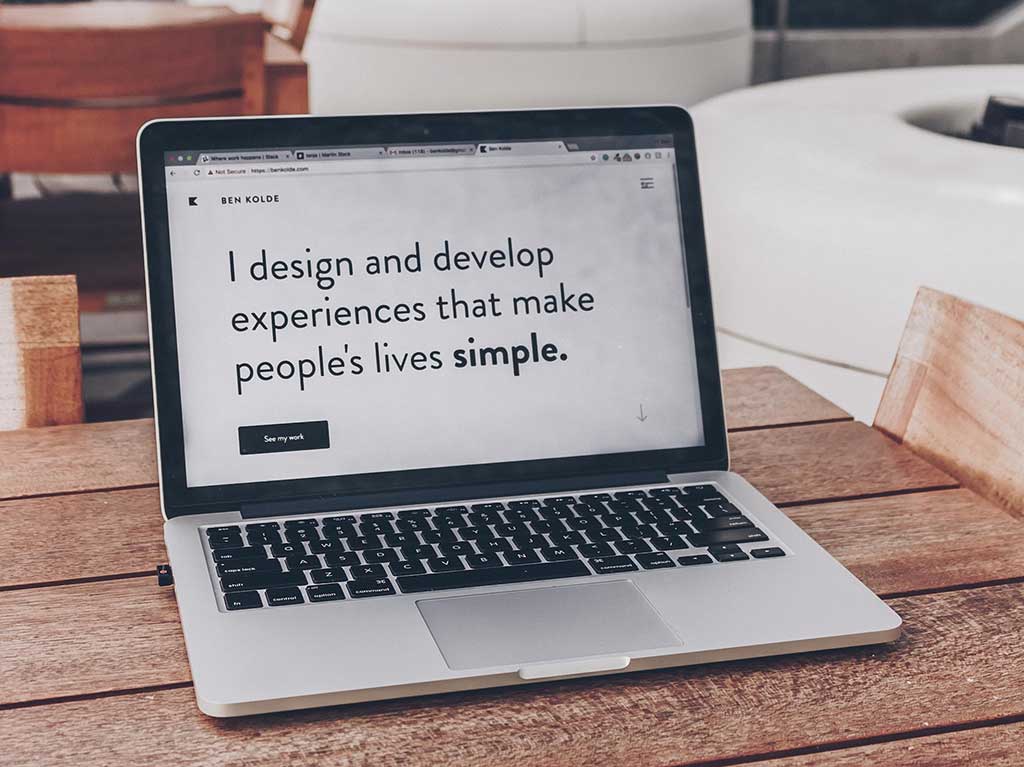Fundamentals
The Art of Asking Effective UX Research Questions

Written by: Phil Hesketh
Published on:
Running an effective UX research study relies on your ability to create questions for your participants that drive meaningful results for your organization.
In this article, we’ll be looking at the best question types, what makes a good or bad question, and some examples you can use in your research studies.
What is a UX research question?
A UX research question is designed to help your researchers gather insights about user behavior, thoughts, experiences, pain points, and preferences when you’re conducting user research studies. They are used for user research interview questions, user testing, surveys, and other situations where researchers need to observe behaviors or get feedback during a research study.
Well-crafted questions are concise and clear, and each question should speak to a specific aspect of the user experience.
Responses to these questions will help your UX team and wider organization to uncover meaningful data about how to improve your products, services, and design.
What makes a good UX research question?
In the world of UX, there tend to be good and bad UX research interview questions. A bad question is one that won’t give you much useful feedback from users, whereas a good question will give you insights that you can take action on to improve your user experience and product.
Bad UX research questions:
“Yes” or “no” questions. Closed ended questions like these prevent your participants responding in detail and giving you more meaningful feedback. However, they do come in handy in certain circumstances. We’ll talk about this further down
Leading questions that encourage the answers you want to hear. These can compromise the objectives of your study. For example “How much do you love using our new checkout page?”
Questions that might send users off on another tangent that isn’t relevant to your study
Ambiguous or broad questions that lead to confusion and different interpretations among your participants. For example “What do you think about our product?”
Combining multiple questions into one. This can make it difficult for users to give you a focused response.
For example, “What were the problems you encountered during onboarding, and how did you overcome them?”. Complex questions like these should be split up and presented as separate questions
Questions that assume participant behaviors and preferences without allowing them to give you their perspective. For example “How often do you use our board feature for your project management?”
Jargon and complex language should be avoided. Questions like “How did you perceive and approach the microinteractions in our UI?” can be confusing for participants to understand, and should be reframed in simple terms.
Good UX research questions:
Are clear, concise, and accessible
Use simple language that is an 8th grade level
Focus on a specific objective
Are unbiased and centered on the participant’s perspectives and experiences
How do you write a UX research question?
When you’re designing your research questions, it’s best to start with your objectives and the assumptions you want to test, and work backwards.
Once you’ve decided what you want to learn from your study, what you’re trying to achieve as an end goal, and what your research methods will be, it’s much easier to create big-picture questions that help you move towards creating the questions you’ll ask your users.
Your questions should help you explore a range of user behaviors, challenges, and needs as you carry out your study. For example:
Are you aiming to find out about key problems users have with your product?
Do you need to find out more about who uses your product, and how they’re using it?
Do you want to learn how users experience your product?
Do you just need some quick answers to verify previous findings?
Let’s take a look at these in more detail.
Open ended questions
Open-ended UX research questions help you discover more about your participants, and gather detailed responses about their experiences with your product.
These questions can’t be easily answered with a couple of words, and are useful when you’re running things like usability tests or task analysis.
Starting your questions with words like these ensure you get free-form feedback from your users that can move you towards testing your hypotheses:
How did you…
Describe how…
Tell me more about…
While the questions are great for getting more in-depth responses, they can also have a few drawbacks for researchers. Sifting through free-form responses can take a long time, especially if you have a large research panel — and many participants can find these types of questions difficult to answer in detail.
Closed questions
We mentioned above that “yes/no” questions aren’t that helpful in many UX research instances. But they do have their place!
If you have a huge participant pool, or you want more statistical responses, close-ended UX research questions can work well, as there are limited possible answers. They’re also perfect if you’re running NPS or CSAT surveys.
Participants can typically respond to these by:
Giving a yes or no reply
Checking a box in a multiple-choice list
Using a single descriptive word
Selecting a rating from a short list of options
If you’re using closed questions, it’s a good idea to have an option like “other” “neutral” or “none of the above” to ensure you’re not forcing your participants to choose an unsuitable answer for them in order to move to the next question.
Screening questions
Screeners are often used as a prelude to UX research studies. They help you filter for your most ideal users so you can get higher quality responses during your study.
These questions are designed to qualify/disqualify people so you can move the right people onto your research panels. For example:
How often do you use the internet?
How frequently do you shop online?
Do you use software tools for project management?
Questions about your users
These questions can help you to understand more about your users, such as who they are, what their pain points are, what they like/dislike, and their more general wants and needs.
Digging into these insights can help you create a better product by giving you more background around your users’ demographics, habits, and attitudes towards product adoption.
You might include questions like “What does a typical weekday look like for you?” or “What type of tools do you usually use to perform [task]”
Questions about pain points
To create a product that successfully solves problems for your users, you first need to understand what those actual (not assumed) problems are.
Questions around pain points help you validate concepts, test new features, and refine existing features. For example:
What was the key challenge you were facing when you went looking for a product like ours?
What other solution or alternative did you use to try and solve this problem?
Can you recall a time when you wished [product/service] had a specific capability?
What was the need or pain point behind this desire?
Are there any tasks or features in [product] that you find overly time-consuming or confusing?
Awareness questions
These help you tap into your users’ relationship with your brand. Some examples of questions like these are:
How did you first hear about our product?
How did you discover our website?
If you visited our website a few times, what made you keep coming back?
How long did it take you to purchase something from our website after your first visit?
Experience questions
Experience questions make a good follow up to your awareness questions. They move further along the customer journey and look at what happened after a user first learned about your product.
These might include questions such as:
What were your first impressions of our website?
When you were on our website, what motivated you to take the free trial?
Was there anything in particular that caused you to abandon your purchase at checkout?
Expectation questions
These investigate the thoughts and assumptions your participants have when they first use your products. To tap into these valuable insights, you can ask questions like:
What was your impression of our onboarding process?
How did you think using our new feature would benefit you?
What were your first thoughts when you were moving through our product dashboard?
Do you feel our product is similar to anything else on the market?
Task-driven questions
These can fall into a general category of asking how participants would perform a certain task, or they can be more specific (e.g. in an interactive user testing environment).
Task-related questions help your researchers find problems with workflows and interfaces, validate your design concepts, and pinpoint any other blocks that might stand between your product and a user having a good experience with it.
Examples of these questions might be:
Go to the dashboard and upload your profile picture
From the homepage, log into our application
How would you go about performing [specific task] ?
What do you expect to happen if you click [specific button in the app]?
Product questions
These questions are fairly straightforward, and can be related to things like usability, design, how users feel when they’re on your app or website, and what people feel could be improved.
They’ll help you get a better idea of which features to focus on, which elements could be altered to improve user experience, and whether your designs are appealing or not.
For example:
How would you feel if you had to navigate through this product by yourself?
How did you find the product navigation in terms of ease of use?
Did you run into any problems installing our app?
What are your overall feelings about using our product?
What appeals/doesn’t appeal to you visually?
Why do you think somebody would use this specific feature?
Do you feel you can trust this product?
What’s the most you’d be willing to pay for this feature?
Dig deeper with follow-up questions
Many of the user research interview questions you ask might reveal an interesting fact that you want to explore further. This is where having a few “dig deeper” questions at your side can come in handy to help you get more inside the mind of your users.
Sometimes even a simple “why?” as a follow-up can be enough to get you a more comprehensive response.
As examples:
User: I felt the layout was very confusing
Follow up: What was it about the layout that you found confusing?
User: This new feature isn’t something I’d personally use
Follow up: What makes you not want to use the new feature?
User: I wasn’t expecting the dashboard to be so difficult to get set up
Follow up: How were you expecting the dashboard setup to work as a new user? \
User: I’m not a fan of the colors here
Follow up: What is it about the colors that you don’t like in relation to this feature?
Always make sure your follow-up questions are open-ended to give your participants the room they need to talk more about their experiences and thoughts.
Closing questions
Having a closing question at the end of your user interviews gives your participants the opportunity to give some final feedback on your product. This last question can often reveal new insights, or reframe some previous insights in a different light.
For example:
If you were recommending our product to a friend or colleague, what would you tell them about it?
Do you feel this product was made for you?
If you could change one thing about our checkout page, what would it be?
What’s the one thing you like most about our product?
What’s the one thing you dislike most about our product?
Wrapping up
To create a fantastic UX experience for your customers, you need to understand who your users are, how they experience your brand or product, and the exact problems you’re trying to solve for them.
A key part of your success will hinge around crafting effective UX research questions that help you eliminate all the guesswork and create a product your customers truly want.
With Consent Kit, you can quickly set up UX research questions for your studies that have accessibility, consent, and security features built-in, as well as keeping you compliant with data and privacy regulations.
Try it free for 14 days, or get in touch for a personalized demo.



